Top 10 Coolest Airports in the World: The Importance of Airports in Travel
Airports are crucial infrastructure elements that serve as the gateway to global connectivity. Initially, airports functioned primarily as transit points, facilitating the movement of passengers and cargo from one location to another. However, over the years, they have evolved dramatically, transforming into multifaceted hubs that provide an array of services, amenities, and experiences beyond mere transportation.
Today’s airports are designed with a focus on passenger comfort and convenience, offering luxurious lounges, diverse dining and shopping options, and various entertainment facilities. This evolution reflects the growing recognition of the airport experience as a vital part of travel. The coolest airports in the world exemplify this shift by integrating art installations, innovative design, and advanced technology to enhance the traveler experience. For instance, some airports feature immersive cultural displays, creating a sense of place that prepares travelers for their destination.
Ultimately, airports play a central role in shaping perceptions about travel. The facilities that prioritize both form and function can significantly enhance the overall journey for travelers. With this in mind, we will explore the coolest airports in the world, identifying what makes them unique and notable in the sphere of global travel.
Criteria for Coolness: What Defines a Cool Airport
Identifying the coolest airports in the world requires a comprehensive evaluation based on several criteria. These criteria not only encapsulate the physical and functional aspects of an airport but also reflect its ability to enhance the overall travel experience. The following factors are crucial in defining what makes an airport stand out among its peers.
Firstly, architectural design plays a significant role in the coolness factor. Airports that feature innovative, visually striking designs or those that integrate local culture into their architecture tend to create a memorable impression on travelers. This aspect extends beyond mere aesthetics; unique structures can demonstrate a commitment to environmental sustainability, efficiency, and passenger comfort.
Another vital criterion is the range of amenities offered. The best airports are equipped with a variety of facilities that cater to different passenger needs. This includes lounges, dining options, shopping opportunities, and relaxation areas. The presence of unique amenities, such as spas or movie theaters, can elevate an airport’s status and make it a destination in its own right.
Efficiency is also a key component when evaluating airports. Factors such as security screening processes, check-in efficiency, and the overall flow of passenger traffic are critical for ensuring a smooth travel experience. Airports that successfully minimize wait times and provide clear signage demonstrate a commitment to passenger convenience.
Innovation and uniqueness cannot be overlooked when defining the coolest airports in the world. Airports that incorporate cutting-edge technology—such as automated check-in kiosks, biometric security systems, and advanced passenger information systems—show a willingness to embrace advancements that enhance operational effectiveness. Or airports that have a certain unique factor to where you are like ‘wow’. This includes art installations, features or experiences no other airport has, and entertainment options. These features not only enrich the aesthetic environment but also reflect an airport’s dedication to cultural engagement and social responsibility.
Singapore Changi Airport: A Garden Paradise
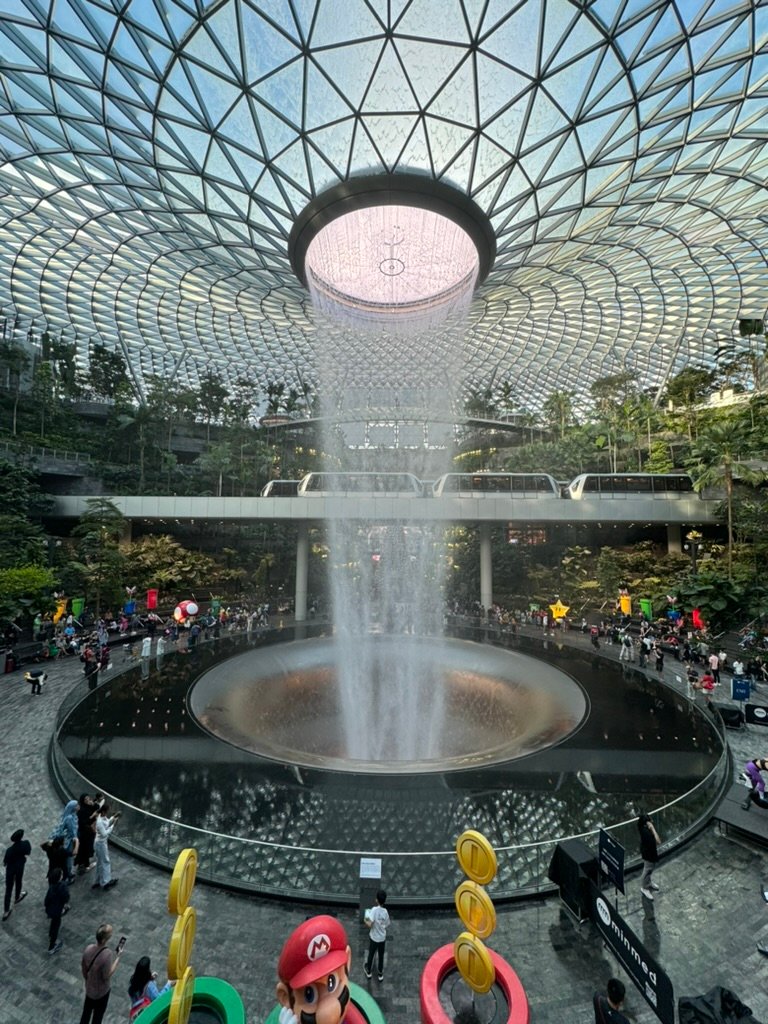
Ranked consistently among the coolest airports in the world, Singapore Changi Airport offers travelers an unparalleled experience that transcends traditional air travel. Opened in 1981, Changi has undergone extensive expansions and renovations, transforming it into a garden paradise that integrates nature into the travel journey. Its unique features not only enhance passenger comfort but also celebrate the region’s natural beauty.
One of the standout attractions is the Butterfly Garden, located in Terminal 3, which houses over 1,000 butterflies of 40 different species. This vibrant habitat provides a serene escape from the hustle and bustle of airport life, allowing travelers to immerse themselves in a tranquil environment. Visitors can witness butterflies fluttering around lush greenery, which is reminiscent of a botanical garden, thus reinforcing Changi’s position among the coolest airports in the world.
Another noteworthy feature is the Rain Vortex, the world’s tallest indoor waterfall, located at the Jewel Changi complex. Flowing through the center of this architectural marvel, the Rain Vortex creates an enchanting atmosphere that captures the essence of Singapore’s tropical climate. This spectacular display is accentuated by light and sound shows, drawing visitors from around the globe to witness the fusion of nature and technology. Passengers can also engage in various activities within the Jewel Shopping Complex, ranging from a mini-golf course to an indoor forest, showcasing the airport’s comprehensive entertainment offerings.
Furthermore, Changi Airport continuously prioritizes passenger satisfaction by providing comfortable lounges, themed gardens, and even a swimming pool. These features and facilities contribute to making Changi not just a transportation hub but a destination in itself. The airport’s focus on blending nature, cutting-edge design, and passenger leisure ensures that it remains a frontrunner among the coolest airports in the world.
Hamad International Airport: A Luxurious Oasis
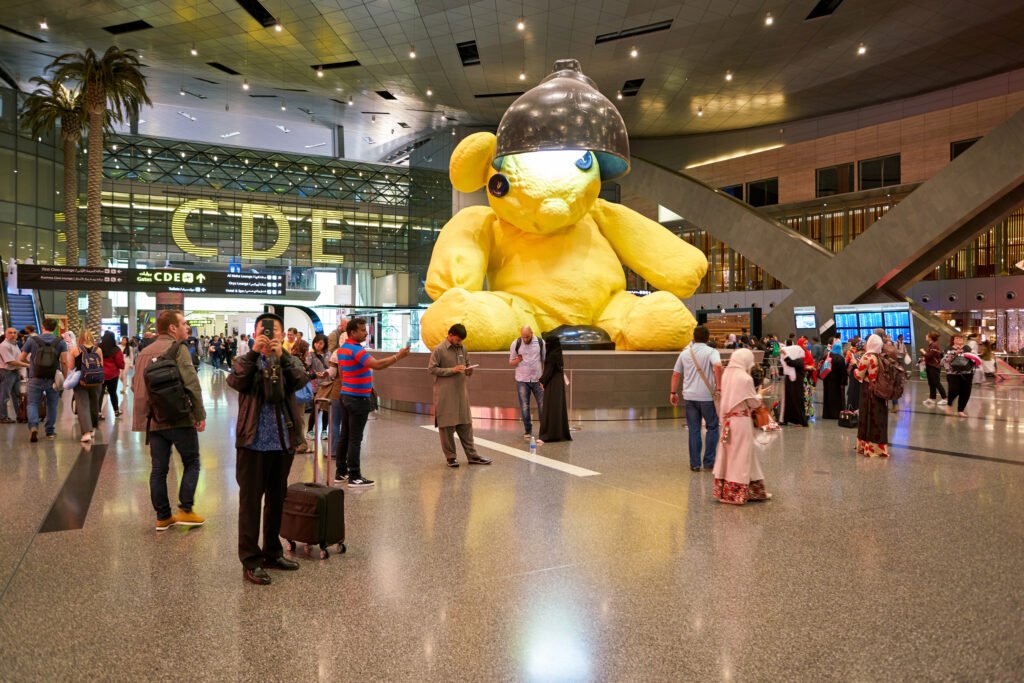
Hamad International Airport, serving as the primary gateway to Qatar, stands as a testament to modern architecture and luxurious travel experiences. Opened in 2014, it has quickly earned its reputation among the coolest airports in the world. Designed to reflect the warmth and culture of Qatar, the airport boasts state-of-the-art facilities that cater to the diverse needs of passengers.
One particularly notable aspect is its impressive collection of art. Throughout the terminal, visitors can admire striking installations by renowned artists, including the 23-foot-tall sculpture titled “The Lamp Bear,” created by Swiss artist Urs Fischer. This integration of art not only enhances the aesthetic experience but also provides a unique cultural insight for travelers passing through this remarkable airport.
In terms of comfort and convenience, Hamad International Airport does not disappoint. It features several premium lounges, including the Al Mourjan Business Lounge, which spans over 10,000 square meters. This lounge provides an exquisite experience, offering travelers a peaceful environment to relax, along with a range of amenities such as a swimming pool, quiet rooms, and a fine dining selection. The attention to detail ensures that guests enjoy their time before boarding their flights.
Dining options at Hamad International Airport are plentiful and diverse, ranging from fast food to gourmet meals prepared by top-tier chefs. With over 30 dining outlets serving various international cuisines, travelers can indulge in culinary delights that reflect Qatar’s gastronomic culture as well as global influences. This variety of choices adds to the airport’s reputation as one of the coolest airports in the world, making it a destination in its own right.
In conclusion, Hamad International Airport epitomizes luxury and comfort, providing travelers with a remarkable experience that highlights the best of modern airport design. Its unique combination of artistic expression, premium facilities, and exceptional dining options solidifies its status as a leader among international airports.
Incheon International Airport: A Cultural Haven
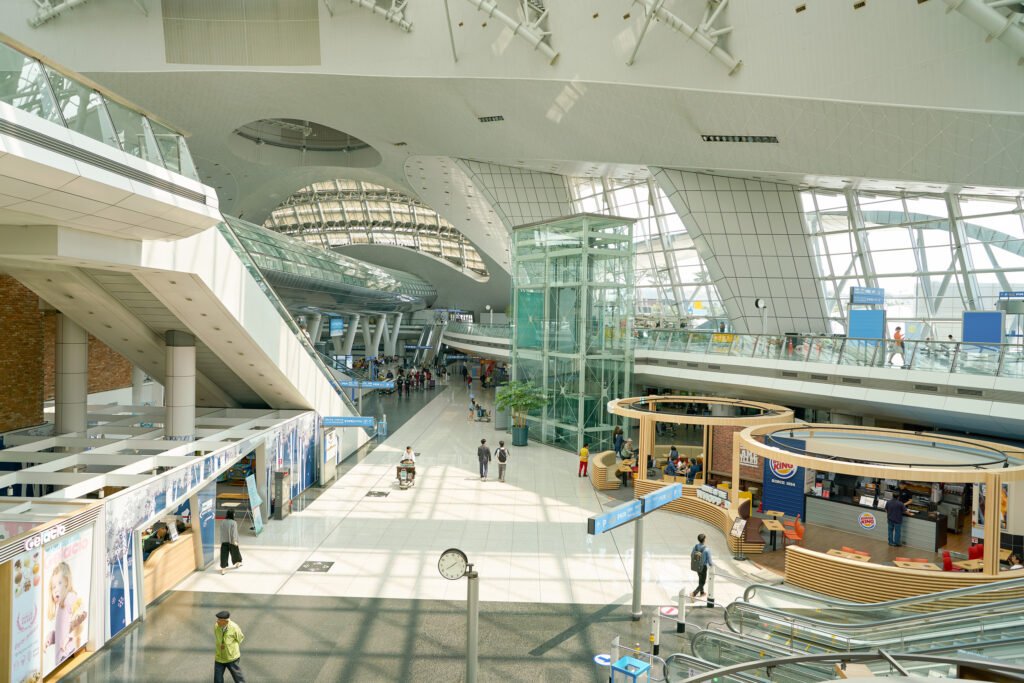
Incheon International Airport, located near the capital of South Korea, Seoul, stands as one of the coolest airports in the world due to its remarkable fusion of modern architecture and cultural experiences. Not only is it recognized for its state-of-the-art facilities and efficient operations, but it also serves as a gateway to South Korea’s rich heritage. Travelers passing through the airport are often greeted with a vibrant display of Korean culture, making their layovers or arrivals memorable.
One of the defining characteristics of Incheon International Airport is its commitment to promoting Korean culture. The airport features regular performances of traditional Korean music and dance, allowing visitors to immerse themselves in the sights and sounds of the nation. These performances, often held in designated cultural zones, showcase the artistic talents of local performers, offering a delightful way for passengers to experience Korea’s artistic heritage, possibly even influencing their travel plans to explore the country further.
The culinary offerings at Incheon International Airport reflect the depth of Korean cuisine. Passengers can indulge in a wide array of traditional dishes, from popular favorites like bibimbap to delicious street food options. Notably, the airport has been recognized for its dining options, attracting food lovers and providing a taste of authentic Korean flavors before they even land in South Korea.
In addition to its cultural performances and culinary experiences, Incheon International Airport also boasts impressive art installations throughout its terminals. These installations often feature contemporary Korean artists and serve as a permanent exhibition of the country’s artistic prowess. Thus, Incheon transcends the typical airport experience, making it a cultural haven that resonates with travelers and solidifies its place as one of the coolest airports in the world.
Tokyo Haneda Airport: Efficiency Meets Charm
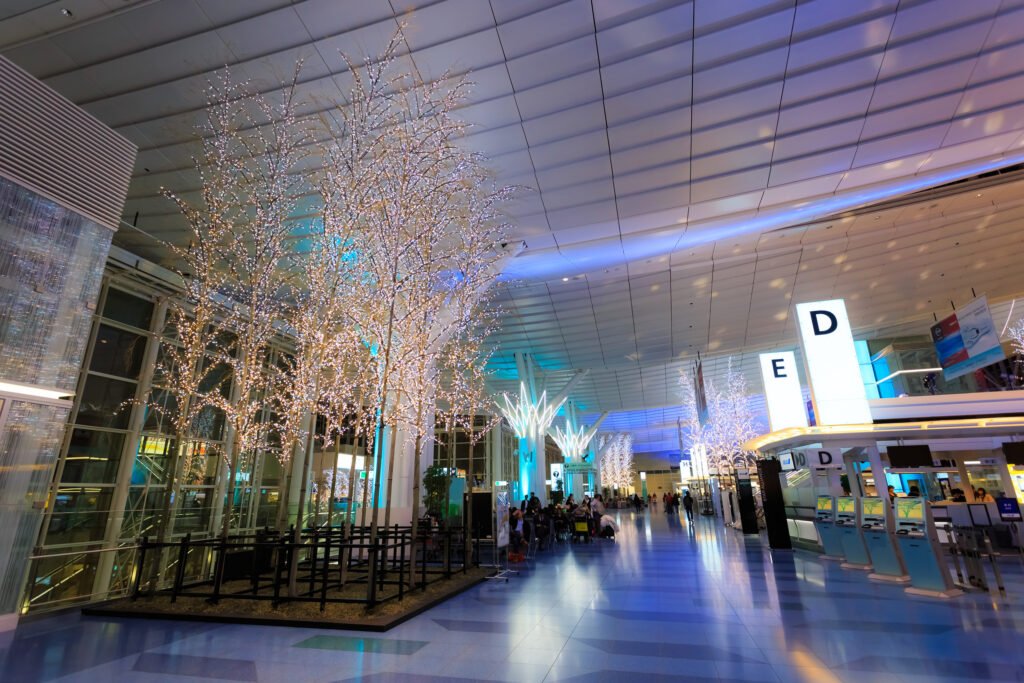
Tokyo Haneda Airport, known by its IATA code HND, is often heralded as one of the coolest airports in the world due to its strategic location and commitment to exceptional service. Situated just a mere 30 minutes from downtown Tokyo, it provides unrivaled accessibility for travelers wishing to explore the bustling capital city. This close proximity ensures that passengers can take advantage of the airport’s efficient transit services, making it an attractive choice for both domestic and international travelers.
The design of Haneda airport is a remarkable blend of modernity and Japanese aesthetics, providing a seamless travel experience. Its various terminals are equipped with state-of-the-art facilities, ensuring that passengers are well taken care of. From the moment travelers enter the airport, they are greeted with an atmosphere that reflects the renowned Japanese hospitality, known locally as “omotenashi.” This dedication to customer service is evident in the airport’s staff, who go above and beyond to assist and guide guests with a polite and courteous demeanor.
Haneda Airport also boasts a diverse range of shopping and dining options that enhance the overall travel experience. Travelers can indulge in authentic Japanese cuisine at various restaurants, showcasing the country’s culinary heritage. The airport features numerous shops that sell everything from luxury goods to traditional souvenirs, allowing passengers to engage in some last-minute shopping before their flights. With unique offerings like the Edo Market, where local delicacies can be purchased, Haneda ensures that passengers are entertained and fulfilled during their time at the airport. This captivating blend of efficiency, charm, and myriad amenities makes Tokyo Haneda Airport a standout contender among the coolest airports in the world.
5. Zurich Airport: A Blend of Functionality and Style
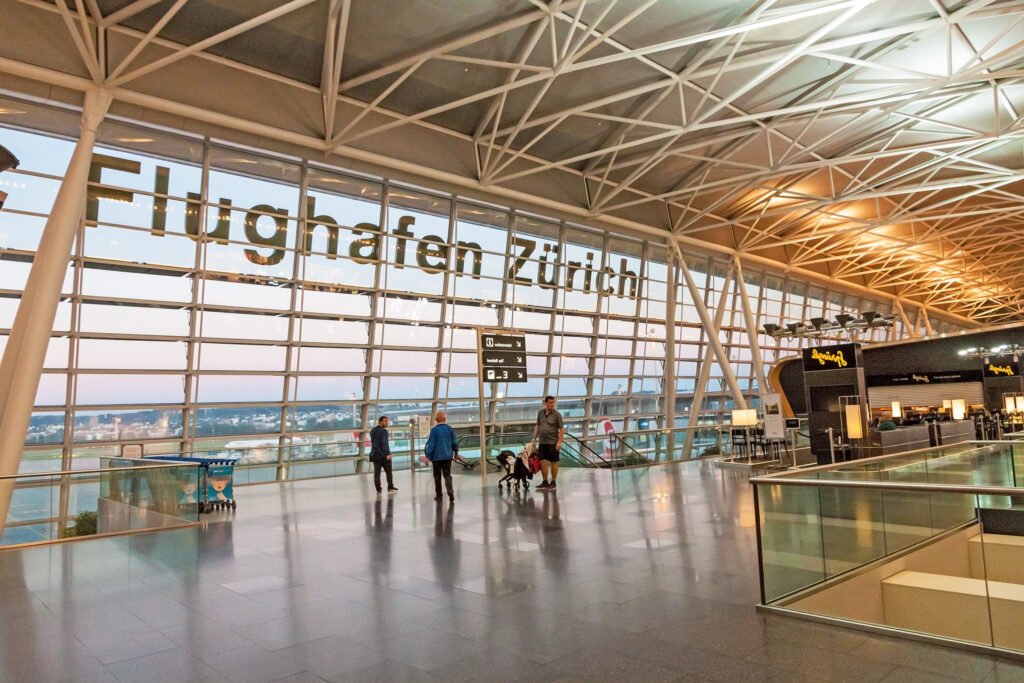
Zurich Airport, located in Switzerland, is frequently celebrated as one of the coolest airports in the world due to its impressive blend of efficiency and sophisticated design. This airport is not only a major hub for international travel but also a pioneer in passenger convenience and comfort. Visitors are often struck by the seamless integration of functionality and style that characterizes this aviation complex.
One of the standout features of Zurich Airport is its comprehensive range of services designed to enhance the travel experience. The airport offers a selection of luxurious lounges, equipped with comfortable seating, complimentary snacks, and quiet zones where travelers can unwind before their flights. Additionally, transit hotels provide the ideal sanctuary for those with layovers, blending contemporary decor with necessary amenities, ensuring that resting between flights is both restful and revitalizing.
In terms of shopping, Zurich Airport stands out with a variety of high-end retail options, ranging from Swiss watch boutiques to luxury fashion brands. The shopping experience is enhanced by duty-free sales, allowing travelers to indulge in a unique blend of local products and international offerings, all while enjoying the stylish atmosphere that Zurich is known for.
For passengers seeking culinary delights, the airport features an impressive selection of dining venues, including fine dining restaurants and casual cafes that serve both Swiss specialties and international cuisine. This attention to quality dining complements the overall chic aesthetic of the airport. Moreover, Zurich Airport’s well-planned layout ensures smooth navigation and timely connections, contributing to its reputation as one of the most functional airports globally.
Overall, Zurich Airport exemplifies how modern design and practical facilities can coalesce to create a travel experience that is both enjoyable and efficient. It undeniably ranks among the coolest airports in the world, setting high standards for its peers globally.
Hong Kong International Airport: Gateway to Asia
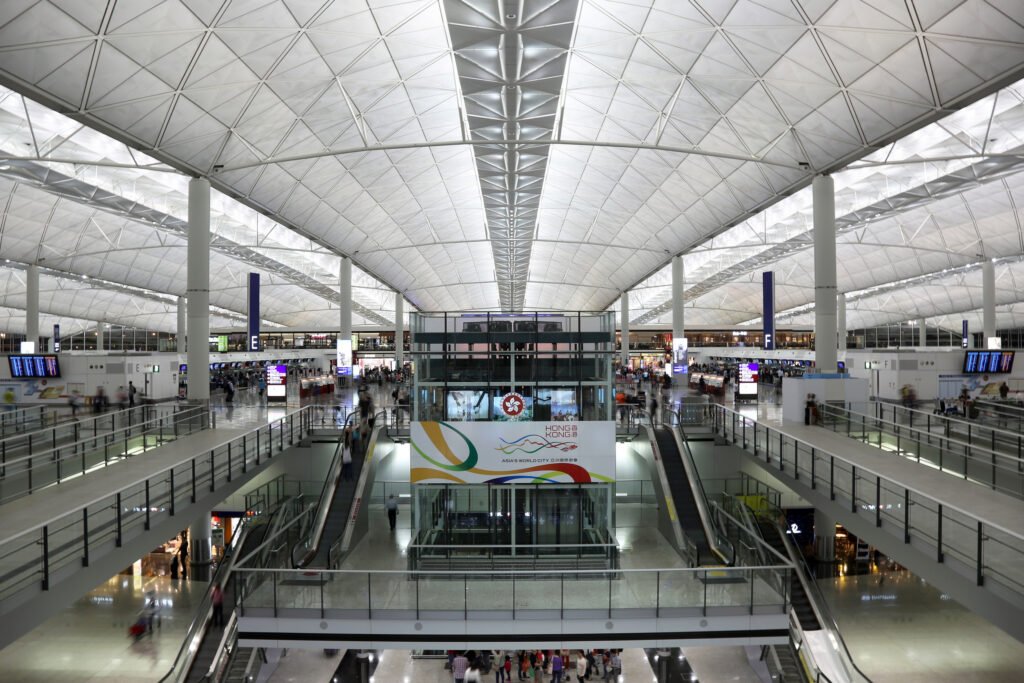
Hong Kong International Airport (HKIA) stands out among the coolest airports in the world due to its remarkable facilities and vibrant atmosphere. As a major hub in Asia, it effectively embodies the essence of Hong Kong while catering to millions of travelers each year. One of the notable features of HKIA is its extensive shopping experience, which attracts both travelers and locals alike.
The airport boasts a plethora of retail outlets, offering everything from luxury brands to local souvenirs. With over 400 shops, passengers can indulge in tax-free shopping, exploring an array of designer boutiques and exclusive stores that reflect the unique culture of Hong Kong. This retail experience ensures that waiting times are never dull and contributes significantly to the airport’s reputation as a gateway to one of Asia’s most dynamic cities.
Beyond shopping, HKIA offers various entertainment options that enhance the overall travel experience. Travelers can visit the Aviation Discovery Centre, where they can learn more about aviation history and the inner workings of the airport. For those seeking relaxation, the airport features a series of lounges that provide comfortable spaces to unwind. Additionally, the SkyDeck allows passengers to marvel at breathtaking views of the airport’s operations and the surrounding scenery. It is a unique feature that truly highlights the beauty of aviation and the vibrancy of Hong Kong.
In essence, Hong Kong International Airport not only serves as a functional transport hub but also as an engaging destination in its own right. With a combination of high-end shopping, entertainment options, and iconic viewpoints such as the SkyDeck, it undoubtedly ranks among the coolest airports in the world, offering travelers a taste of what makes Hong Kong so special.
7. Munich Airport: A Destination in Itself
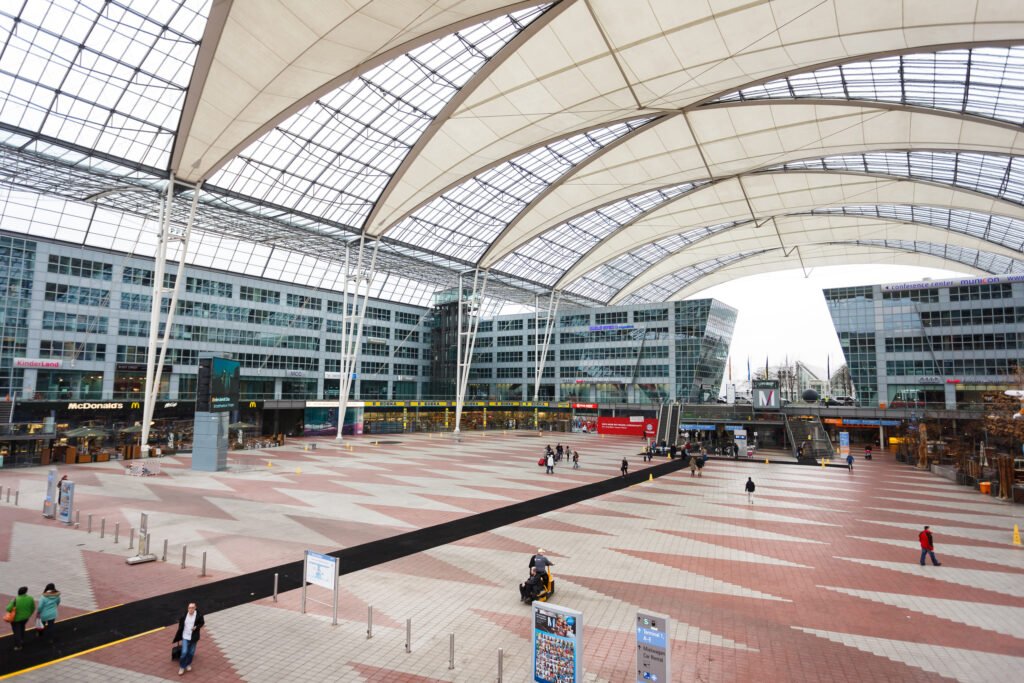
Munich Airport, known as Flughafen München, is not merely a gateway for travelers but a remarkable destination in its own right, often classified among the coolest airports in the world. Its extensive range of facilities and unique offerings make it a standout location for visitors. One of the most notable features is the airport’s beer garden, which invites travelers to experience authentic Bavarian culture as they enjoy refreshing local brews. This tradition provides a welcoming atmosphere for individuals looking to unwind before or after their flights.
Additionally, Munich Airport boasts an impressive visitor park, complete with playgrounds, miniature golf, and picnic areas. This park offers travelers a delightful opportunity to spend time outdoors and engage with the vibrant atmosphere that embodies Munchen’s character. The visitor park is not only family-friendly but also serves as a great spot for aviation enthusiasts to witness the constant activity of planes taking off and landing.
Art lovers will also find plenty to appreciate within the airport’s many galleries, where continuous exhibitions showcase works from both established and emerging artists. These art installations enhance the traveler’s experience, rendering Munich Airport a space where culture and hospitality go hand in hand. Furthermore, exhibitions promote awareness of local heritage while positioning the airport as a cultural hub, encouraging passengers to delve deeper into Bavarian traditions.
In essence, Munich Airport exemplifies how an airport can transcend its primary function, presenting travelers with a plethora of amenities and experiences. From its renowned beer garden to its artistic endeavors, it’s evident why Munich Airport is consistently ranked among the coolest airports in the world. The airport’s commitment to passenger enjoyment and cultural representation solidifies its status as an extraordinary destination that complements the allure of traveling through Germany.
Dubai International Airport: Architectural Marvel and Shopping Paradise
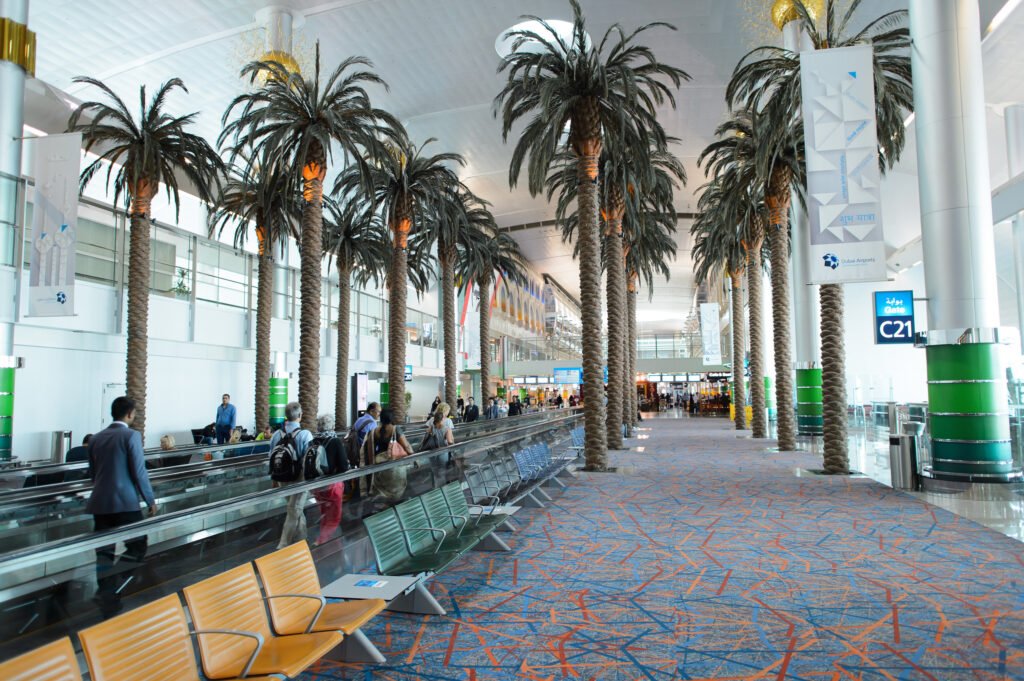
Dubai International Airport (DXB) consistently earns recognition as one of the coolest airports in the world, reflecting the opulence and grandeur associated with Dubai itself. Strategically located and architecturally innovative, this airport features a blend of cutting-edge design and functional efficiency, making it an iconic landmark in air travel.
Upon entering the airport, travelers are greeted by a stunning expanse of natural light due to the large glass facades. The architectural design not only enhances the aesthetic appeal but also serves a practical purpose by creating a pleasant atmosphere for passengers. The art installations and modern sculptures throughout the terminals further enhance Dubai International Airport’s reputation as a cultural hub, offering a glimpse into the city’s artistic aspirations. They even have palm trees inside!
One of the hallmarks of DXB is its luxurious lounges, which cater to the needs of discerning travelers. These lounges provide a serene escape from the hustle and bustle of the terminal, offering exquisite food selections, comfortable seating, and high-end amenities. Whether travelers have a long layover or just need a place to unwind, these lounges exemplify the comfort associated with the coolest airports in the world.
The shopping experience at Dubai International Airport is unparalleled, featuring an extensive array of duty-free outlets. Passengers can indulge in designer brands, exclusive perfumes, and gourmet foods, all while enjoying tax-free prices. The airport showcases the upscale image of Dubai, transforming the travel experience into a shopping adventure. With an emphasis on luxury and convenience, the offerings are tailored to meet the desires of international travelers.
In conclusion, Dubai International Airport stands out not only for its architectural marvels but also for its commitment to providing a luxurious travel experience. With innovative design, exceptional lounges, and a shopping environment that rivals high-end retail malls, it epitomizes what it means to be among the coolest airports in the world.
Istanbul Airport
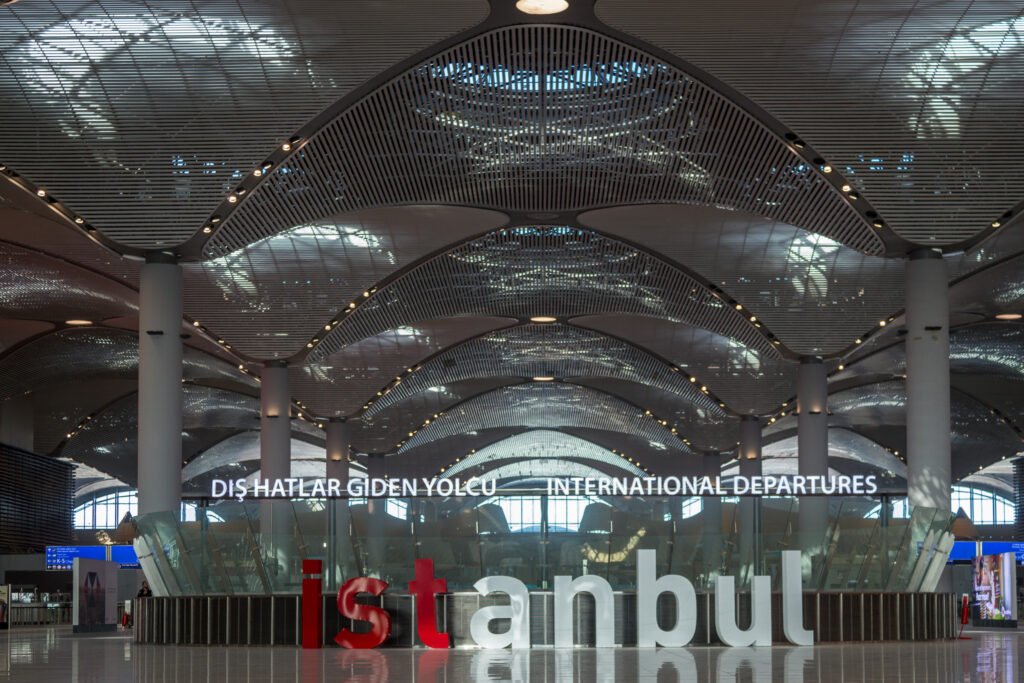
Istanbul Airport, which officially opened in 2018 (which is great as I wasn’t a fan of the old airport), stands out as a remarkable feat of modern engineering and design. Spanning over 76 million square feet upon full completion, this airport is poised to accommodate up to 200 million passengers annually, making it one of the largest in the world. The architectural design of Istanbul Airport is not only impressive but also serves functional purposes, integrating cutting-edge technology and sustainable practices to enhance the overall passenger experience.
Strategically located on the European side of Istanbul, the airport serves as a major global transit hub, connecting travelers from East to West. This central position facilitates seamless travel routes, making Istanbul Airport an essential stopping point for international flights. Its expansive layout includes multiple runways and terminals designed to handle a high volume of flights efficiently. This innovative design significantly reduces wait times and streamlines passenger flow throughout the airport.
In addition to its operational capabilities, Istanbul Airport is equipped with an array of premium facilities that cater to the diverse needs of modern travelers. Visitors can enjoy a wide selection of luxurious lounges, world-class dining options, and extensive shopping experiences that include both international brands and local Turkish goods. Furthermore, the airport features unique art installations that reflect Turkey’s rich cultural heritage, creating an aesthetically pleasing environment for passengers and enhancing their overall journey.
Istanbul Airport not only symbolizes Turkey’s rising prominence in global aviation but also showcases how architecture and innovative design can significantly improve the travel experience. With its blend of efficiency, elegance, and cultural representation, it indeed elevates the standard for airports worldwide.
Gibraltar Airport: Ever Wanted to Walk or Drive Across an Airstrip?
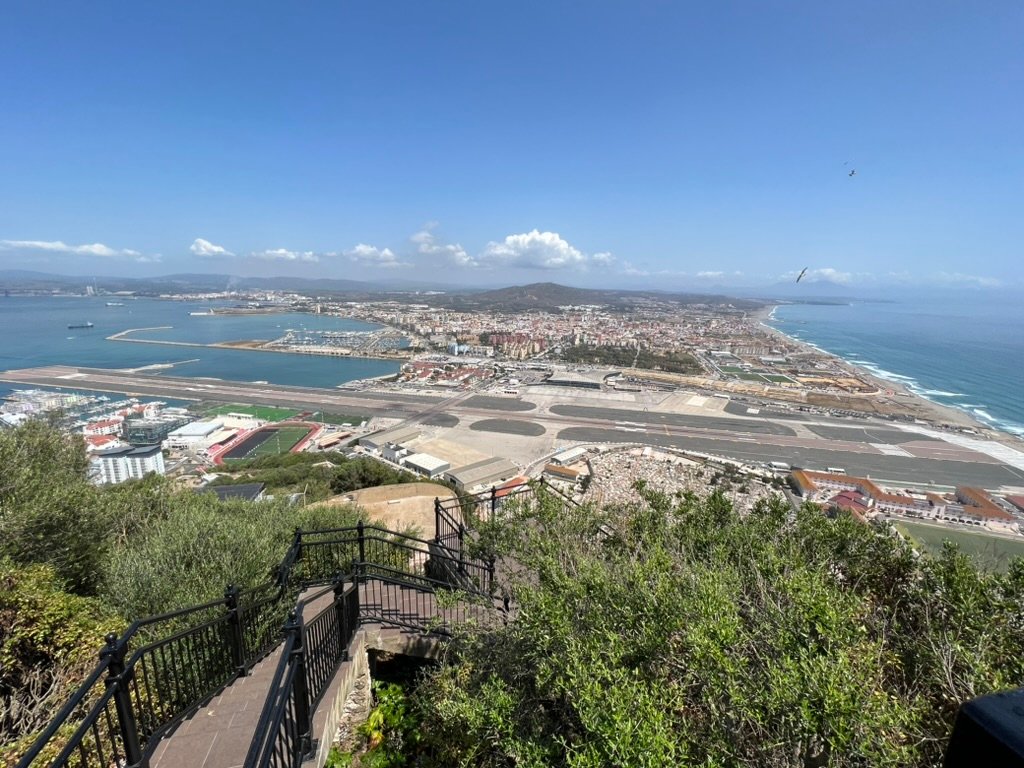
Let’s be real this airport made it because of it’s wild layout. Gibraltar Airport is renowned not only for its operational efficiency but also for its remarkable location and unique characteristics that captivate travelers from around the globe. Situated at the foot of the iconic Rock of Gibraltar, the airport boasts breathtaking views that are rarely matched elsewhere. As passengers prepare for takeoff or landing, they are treated to sweeping panoramas of both the Mediterranean Sea and diverse landscapes, offering an unforgettable prelude to their journey.
One of the most distinctive features of Gibraltar Airport is its runway, which intriguingly crosses the main road leading into the territory. This unique characteristic means that vehicles must stop to allow aircraft to take off and land, creating a fascinating interchange between aviation and daily life. This unusual setup not only adds to the excitement of air travel but also serves as a testament to the airport’s pivotal role in the community. It fosters a sense of connection between residents and visitors, enhancing the overall travel experience. The vibrant atmosphere at Gibraltar Airport blends a small-town feel with the global nature of air travel, making it a charming entry point to the region.
Additionally, Gibraltar Airport serves as a crucial link between the British Overseas Territory and various European destinations. Flights connecting to cities in the United Kingdom and beyond provide travelers with not only convenience but also a sense of adventure. Given its limited runway length and proximity to vibrant urban areas, embarking on a journey from this airport feels uniquely exhilarating. This combination of stunning scenery, distinct operational features, and local charm positions Gibraltar Airport as one of the coolest airports in the world, inviting travelers to embark on their adventures with enthusiasm.
Why Cool Airports Matter
Airports have evolved beyond their fundamental purpose of facilitating travel; they are becoming integral parts of the travel experience. The coolest airports in the world embody this transformative trend by offering amenities and designs that engage, inspire, and entertain travelers. These airports have redefined the conventional image of transit points, showcasing remarkable architecture, unique cultural elements, and a variety of services that cater to passengers’ needs and interests.
One of the most significant traits shared by these airports is a commitment to enhancing passenger experience. From art exhibitions and local cuisine to relaxation zones and entertainment options, the coolest airports provide a glimpse into the culture and lifestyle of their respective locations. This not only makes the experience more enjoyable but also allows travelers to immerse themselves in the destination, even before they step outside the terminal. Airports like Changi in Singapore or Hamad in Doha serve as living galleries and marketplaces, elevating the travel experience to that of a destination unto itself.
Looking to the future, airport design and amenities will likely continue to change, driven by advancements in technology and the evolving expectations of travelers. As more people seek out engaging and meaningful experiences, airports must adapt by creating environments that accommodate leisure and comfort. Innovations such as virtual reality lounges, sustainable practices, and personalized services will play significant roles in shaping the next generation of major airports, ensuring that they remain relevant and exciting. Ultimately, recognizing the value of cool airports could inspire travelers to view them not merely as layovers but as vital parts of their journeys, enhancing their overall travel narratives.
